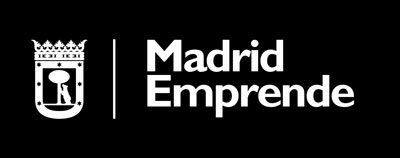- If you are self-employed, it is time to prepare your quarterly tax payments
- Presentation period for the fourth quarter of VAT, from January 1 to 30
- Presentation period for the fourth quarter of personal income tax, from January 1 to 20
Being self-employed, it is important to know what tax obligations must be submitted and, if applicable, paid quarterly.
Below are the most common models that must be presented to the Treasury by the self-employed.
Quarterly personal income tax models
The personal income tax is the tax that the self-employed must pay on their net income (net income = income – deductible expenses).
When presenting the quarterly personal income tax models, it is necessary to differentiate between two concepts:
Income to personal income tax account
These are advances that the self-employed person must make for personal income tax if they do not apply withholding on more than 70 % of their invoices. The following models are presented:
- Model 130 in case of being in a direct estimation regime.
- Model 131 in case of being in an objective estimation regime (modules).
In addition, it is important to take into account the obligation to submit the annual personal income tax return, form 100, which will reflect what was submitted in the 4 quarters.
Withholdings made
These are the amounts that are withheld from other self-employed professionals and that must be paid on their behalf on a quarterly basis. The following models are presented:
- Model 111 in the event that personal income tax withholdings have been made for professional services.
- Model 115 in the event that personal income tax withholdings have been made for the rental of a premises.
In addition, it is important to present the annual summary of withholdings, represented by the model 190 (withholdings for professionals) and model 180 (rental withholdings).
Quarterly VAT model
The value added tax is an indirect tax on consumption derived from the purchase of goods or professional services. It is a tax that the final consumer must pay, so the self-employed person, as a general rule, will submit a quarterly settlement (difference) between the VAT they pay on their purchases and the VAT that affects their invoices.
Model 303
If you are in the general VAT regime and two situations may arise:
- Output VAT (sales) is higher than input VAT (purchases): the result is positive, so the difference is paid to the Tax Agency.
- Output VAT (sales) is lower than input VAT (purchases): the result is negative, so the balance is offset with subsequent positive settlements.
If upon reaching the fourth quarter of the year, the result is still negative, you can request a VAT refund (it is done in the January declaration of the following year).
It is important to present the annual VAT summary, represented by the model 390. It is a merely informative model.
Model 349
In the case of carrying out intra-community operations (operations with countries within the EU) and it is an informative model only.
It must be taken into account that there are a series of economic activities, such as health activities and regulated training, that are exempt from VAT. Therefore, there is no obligation to submit form 303 every quarter.
Deadlines for submitting quarterly tax payments
As a general rule, the deadlines for submitting quarterly returns are:
• First quarter (January to March): from April 1 to 20, both VAT and personal income tax.
• Second quarter (April to June): from July 1 to 20, both VAT and personal income tax.
• Third quarter (July to September): from October 1 to 20, both VAT and personal income tax.
• Fourth quarter (October to December): from January 1 to 30 for VAT and from January 1 to 20 for personal income tax.

